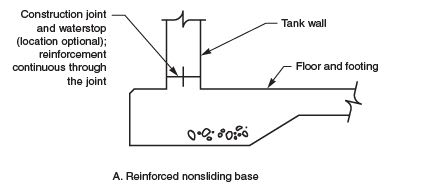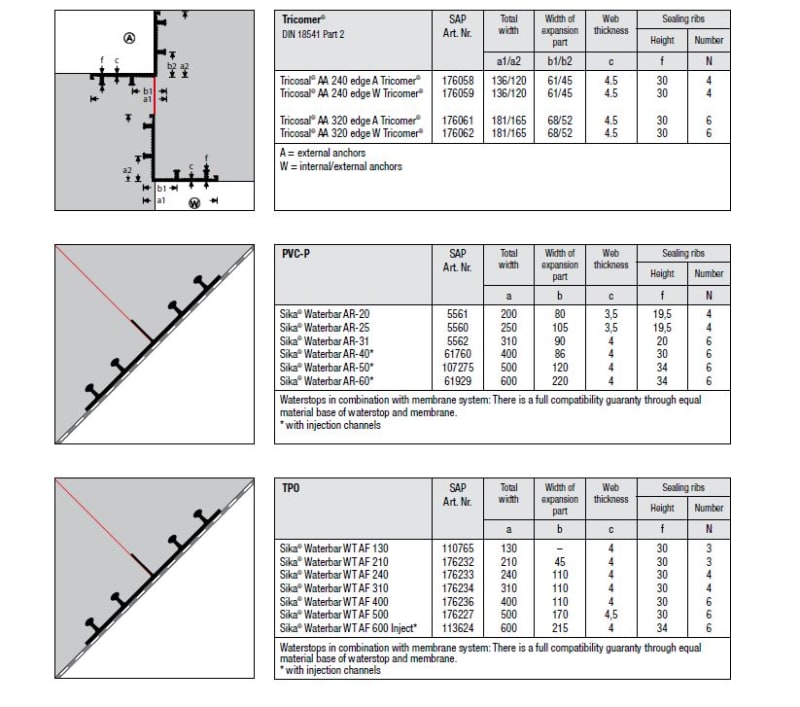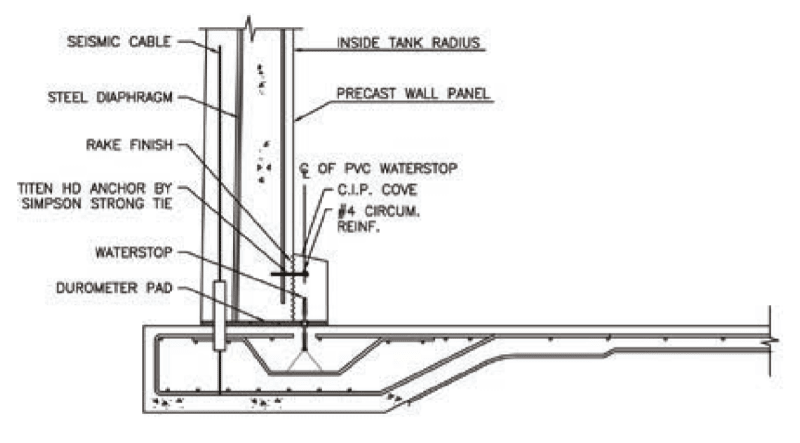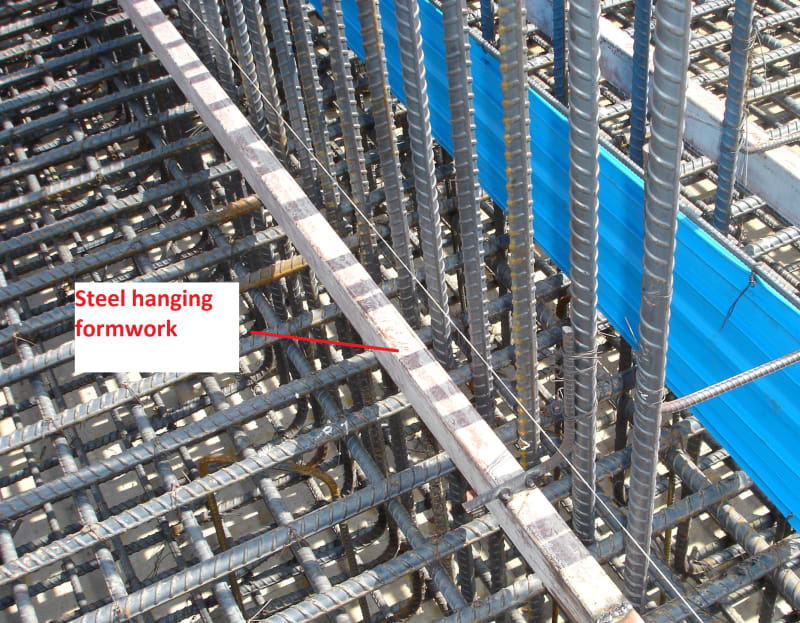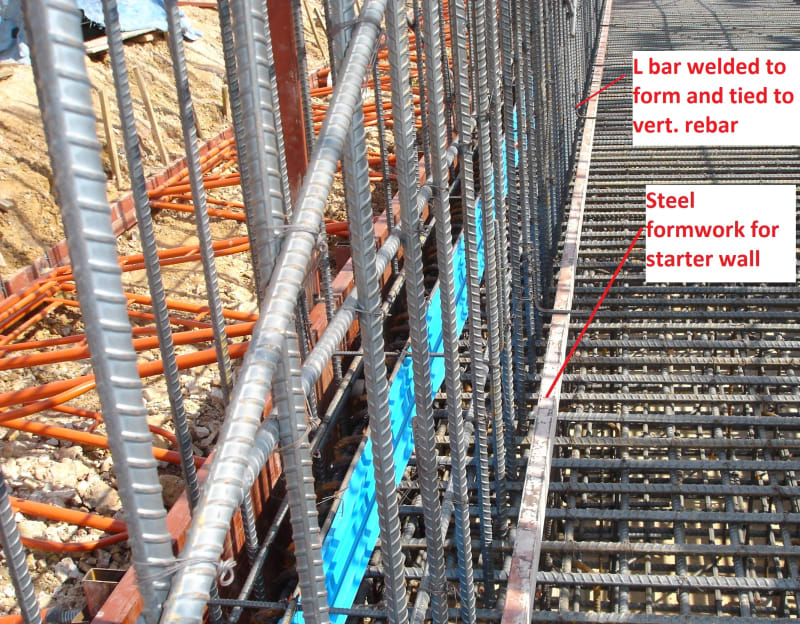Looking for opinion regarding ACI350 recommendations for (1)Starter wall and (2)Upturn Key at Wall-to-Mat/footing interface in concrete water tanks.
Especially if someone is involved in the code committee or is aware of the upcoming revision to ACI350 which references this item.
I have been generally following a starter wall detail for this interface (see sample below):
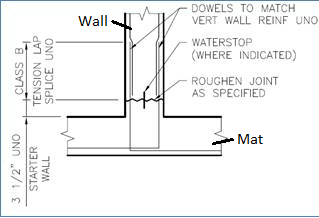
Based on my discussions with other engineers in the past, I have generally avoided using an Upturn key detail at this interface (similar to the one shown below):
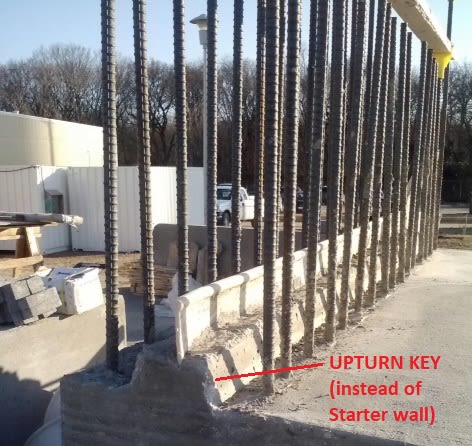
From what I remember the primary reasoning was that the upturn key has potential to cause diagonal crack to form from the key to the face of the wall opposite from the applied load. Something as shown in the sketch below:
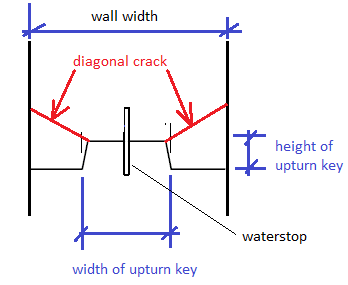
Also, one could argue that the remaining portion of the wall (adjacent to the upturn key) that gets poured with the portion of wall above has a high chance of honeycombing /voids due to its location and size, thus compromising the quality of concrete at this interface.
Recently, I had a discussion with a fellow engineer who mentioned that the upcoming ACI350-20 revision is recommending against the use of starter walls and prohibiting the use of keys at this interface.
So the option available to accommodate the PVC waterstop required at this interface will be something like the rebar arrangement shown in the below sketch:
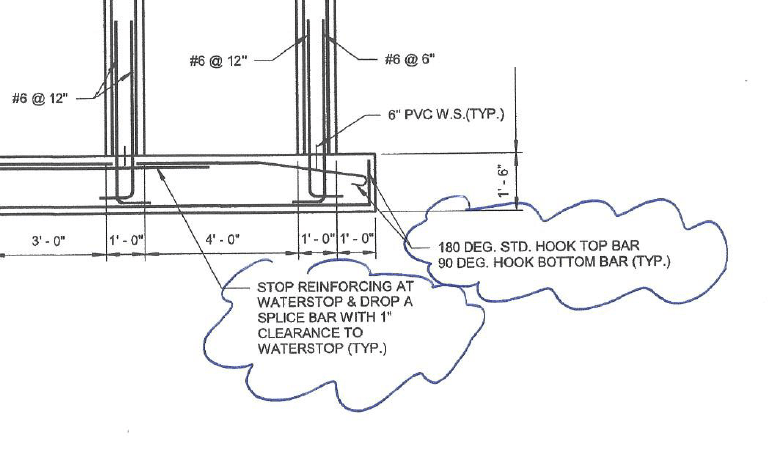
(1) Looking for reference/reasoning to confirm the issue with using an Upturn key detail at this interface. Few colleagues have specified this detail in the past and never seen/heard of cracks or faced any issue.
(2) Looking for reference/reasoning to confirm the issue with using a Starter wall detail at this interface. In my past projects dealing with concrete water tanks, I have never observed/heard of cracks or other issues when using starter walls (except that the contractor hates it since he has to hang forms for the starter wall).
(3)If both upturn key and starter wall detail are not recommended at this interface, then what is generally done to avoid waterstop/rebar interference? Would appreciate if any sketch/rebar details can be shared.
Especially if someone is involved in the code committee or is aware of the upcoming revision to ACI350 which references this item.
I have been generally following a starter wall detail for this interface (see sample below):

Based on my discussions with other engineers in the past, I have generally avoided using an Upturn key detail at this interface (similar to the one shown below):

From what I remember the primary reasoning was that the upturn key has potential to cause diagonal crack to form from the key to the face of the wall opposite from the applied load. Something as shown in the sketch below:

Also, one could argue that the remaining portion of the wall (adjacent to the upturn key) that gets poured with the portion of wall above has a high chance of honeycombing /voids due to its location and size, thus compromising the quality of concrete at this interface.
Recently, I had a discussion with a fellow engineer who mentioned that the upcoming ACI350-20 revision is recommending against the use of starter walls and prohibiting the use of keys at this interface.
So the option available to accommodate the PVC waterstop required at this interface will be something like the rebar arrangement shown in the below sketch:

(1) Looking for reference/reasoning to confirm the issue with using an Upturn key detail at this interface. Few colleagues have specified this detail in the past and never seen/heard of cracks or faced any issue.
(2) Looking for reference/reasoning to confirm the issue with using a Starter wall detail at this interface. In my past projects dealing with concrete water tanks, I have never observed/heard of cracks or other issues when using starter walls (except that the contractor hates it since he has to hang forms for the starter wall).
(3)If both upturn key and starter wall detail are not recommended at this interface, then what is generally done to avoid waterstop/rebar interference? Would appreciate if any sketch/rebar details can be shared.

